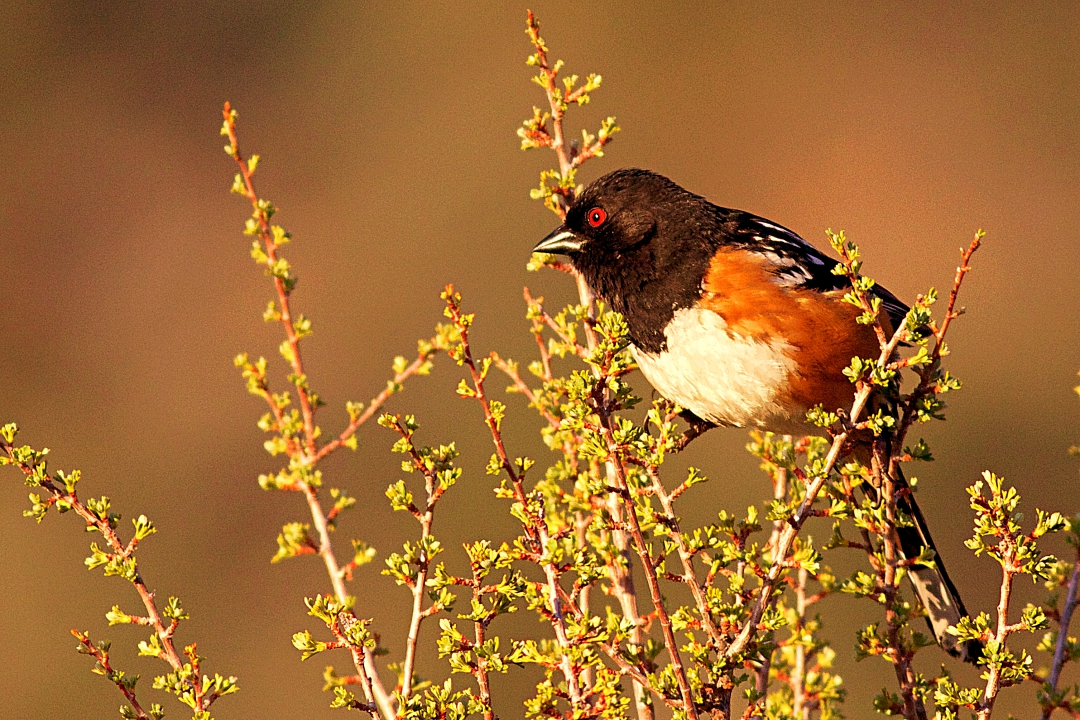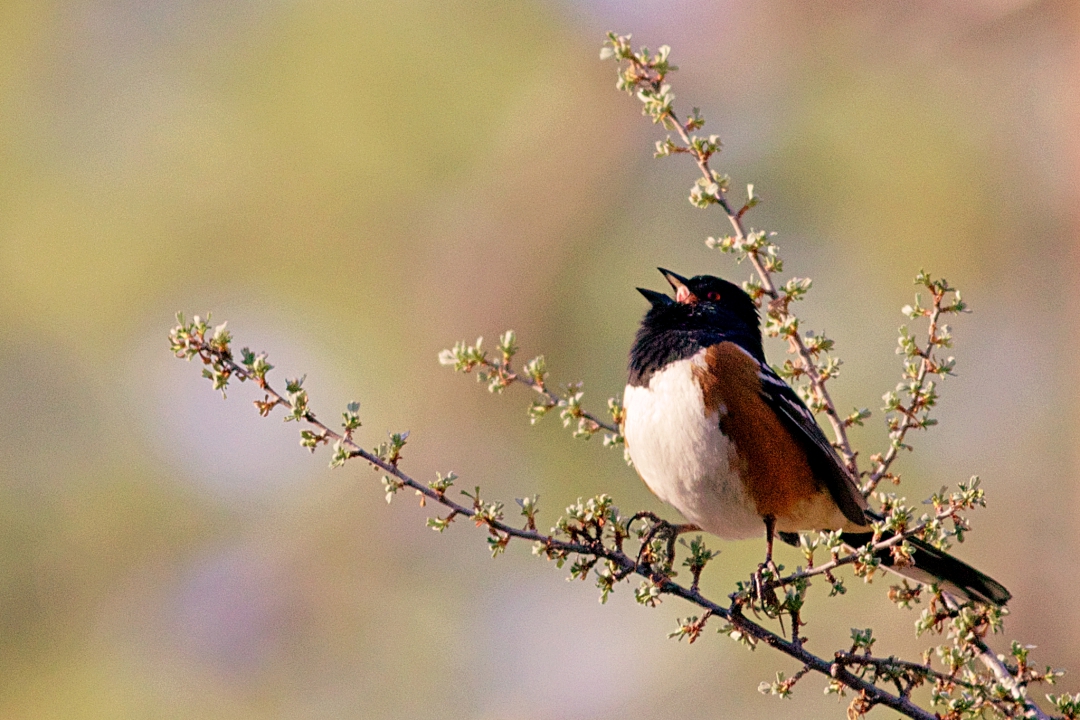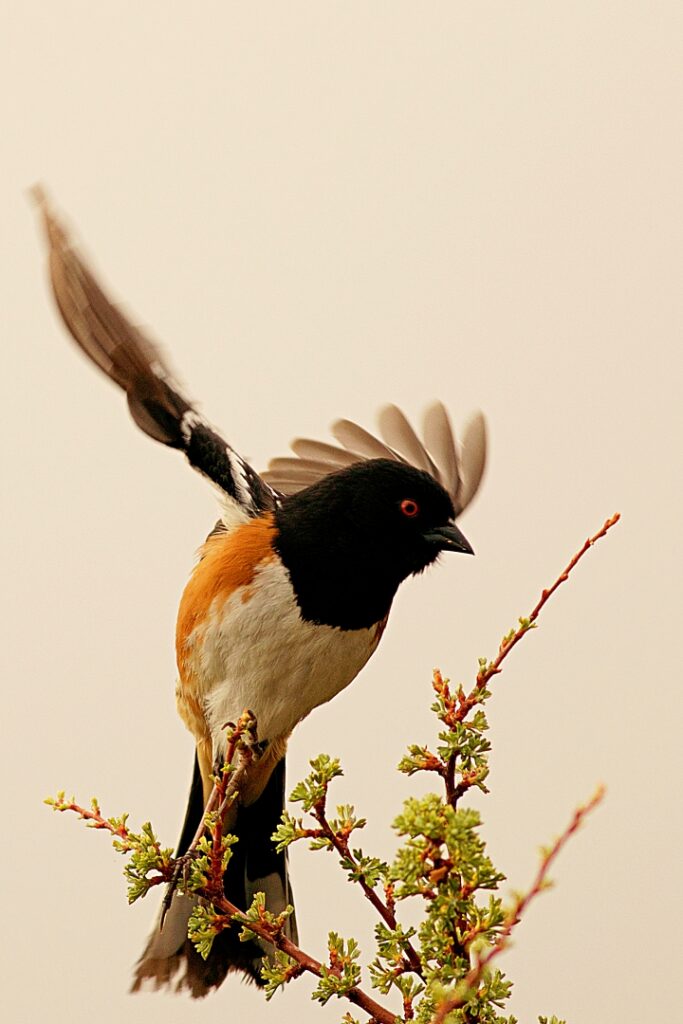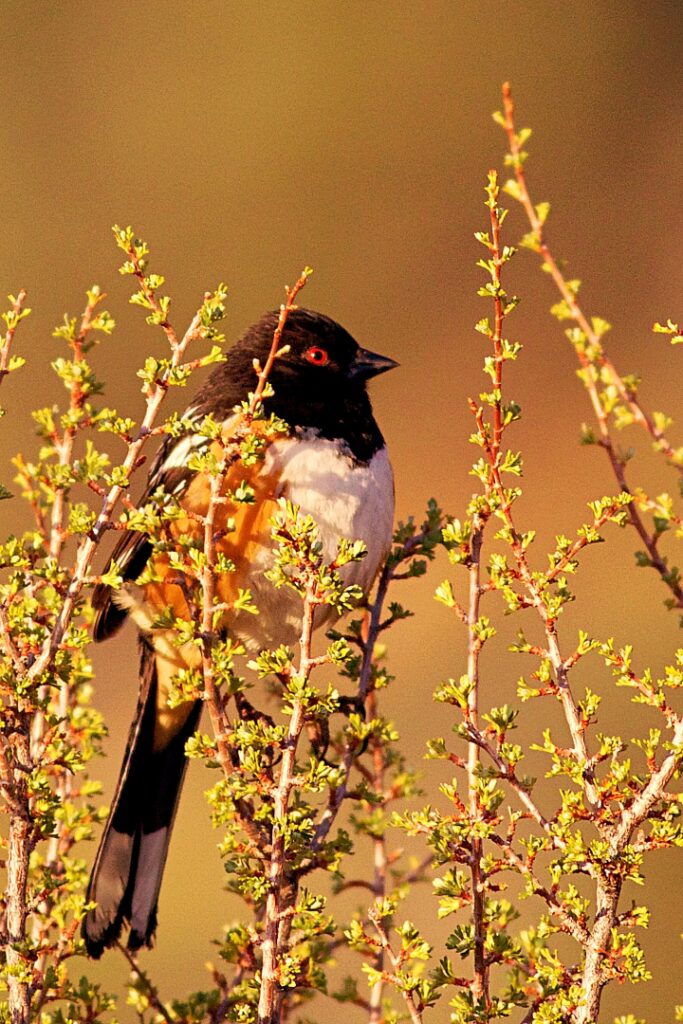
So as you start your hike up the Sandy Trail from the Fay-Luther trailhead, you may hear this call emanating from the bushes…
You look but don’t see anything, just sage and bitterbrush, so you keep walking. Further up the trail, you hear a bird singing…

And finally you catch a glimpse of it, a striking bird about the size of a Robin, with a black head and bright red eyes, russet flanks and a black back with white spots. This is the Spotted Towhee.
Although they are quite common here, they are secretive and are far more often heard than seen, which is a shame as they are so beautiful! Your best bet to see them is in the springtime, as early in the breeding season, male Spotted Towhees spend their mornings singing their hearts out, trying to attract a mate. Male towhees have been recorded spending 70 percent to 90 percent of their spring mornings singing. Almost as soon as they attract a mate, their attention shifts to other things, and they spend only about 5 percent of their time singing.

Their preferred habitat is dry thickets, brushy tangles, forest edges, old fields, shrubby backyards, chaparral, coulees, and canyon bottoms, places with dense shrub cover and plenty of leaf litter for the towhees to scratch around in. If you are lucky enough to see a Spotted Towhee feeding on the ground; you’ll probably observe its two-footed, backwards-scratching hop. This “double-scratching” is used by a number of towhee and sparrow species to uncover the seeds and small invertebrates they feed on. One Spotted Towhee with an unusable, injured foot was observed hopping and scratching with one foot.

Right now during the breeding season, Spotted Towhees eat mainly insects including ground beetles, weevils, ladybugs, darkling beetles, click beetles, wood-boring beetles, crickets, grasshoppers, caterpillars, moths, bees, and wasps. Other leaf-litter arthropods such as millipedes, sowbugs, and spiders are taken as well. They also eat acorns, berries, and seeds including buckwheat, thistle, raspberry, blackberry, poison oak, sumac, nightshade, chickweed, and crops such as oats, wheat, corn, and cherries. In fall and winter, these plant foods make up the majority of their diet.
The Spotted Towhee and the very similar Eastern Towhee used to be considered the same species, the Rufous-sided Towhee. The Eastern Towhee lacks the white spots on their backs. The two forms still occur together in the Great Plains, where they sometimes interbreed. This is a common evolutionary pattern in North American birds – a holdover from when the great ice sheets split the continent down the middle, isolating birds into eastern and western populations that eventually became new species.

So keep and eye and an ear out for these gorgeous birds. I would like to thank Curt Lueck for the amazing photos! You can follow him here on Instagram to see more of his gorgeous photos, many taken locally.

Great article. Incredible photos!